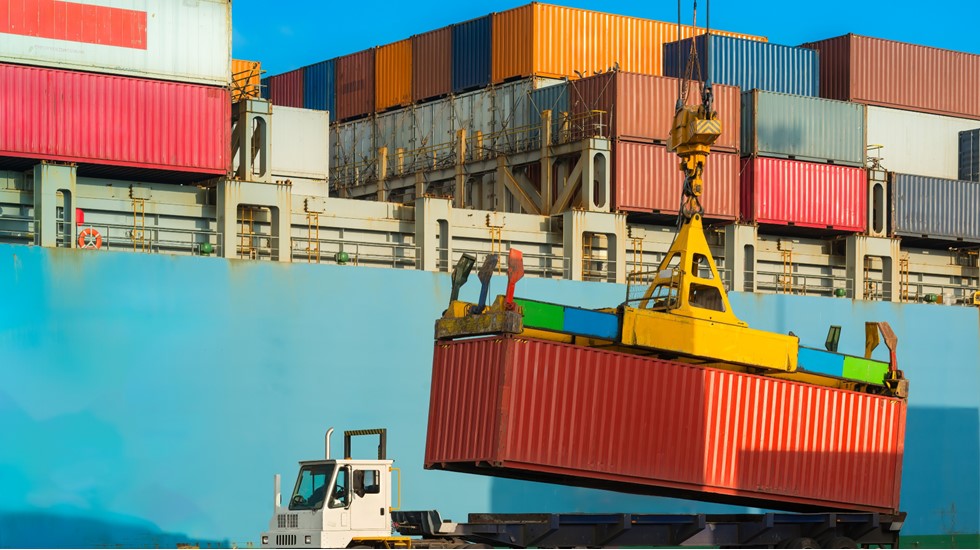Latin America slows in the second half of 2025
Tariffs are the wild card.

August 4, 2025
Economic growth in Latin America (Latam) is projected to remain subdued with forecasts of 1.9% for both 2025 and 2026 following a modest increase of 1.8% in 2024. Inflation is generally on a downward trend across the region; central banks may have more room to cut in the second half of this year or early next year. Threats of tariffs by the United States are expected to have only minor economic effects in the short term (with the exception of Mexico). They could have larger political and geopolitical ramifications, inducing Latam to strengthen relationships with China, Europe and other regions. Downside risks include currency fluctuation and weak growth abroad, especially in the US, China and EU.
- Argentina: Growth is set to rise after two years of contraction. Economic reforms are helping. The currency remains overvalued; that is weighing on exports and FX reserves. Inflation has come off its peak of nearly 300% in April 2023 to about 40% in June 2025. Austerity programs and market reforms have driven the drop in inflation.
- Brazil: Production and consumption are slowing due to restrictive monetary policy with a Selic rate of 15%. Volatility in the currency, bond yields and equity prices are expected due to tariff threats from the US; that could further dampen investment.
- Chile: Inflation continues to cool and is expected to be within target by early next year. The central bank cut its interest rate in late July for the first time this year. US tariffs on copper were mitigated by exemptions; the effect on Chile is low in the near-term.
- Colombia: The government suspended its fiscal rule, which increases concerns about fiscal sustainability. That is likely to weigh on investment and put downward pressure on the currency.
- Mexico: Growth is expected to be weak in the second half of this year. Much depends on how tariffs evolve in the US and the fate of the USMCA renegotiation in 2026. We cannot rule out the possibility that the trade agreement is not renewed. That could set in motion a sunset clause that would wipe it out by 2036.
- Peru: Inflation remains within target while monetary policy is around neutral. Peru could benefit from deepening trade relationships with both China and the US.
- Uruguay: Inflation is within target; additional cooling will provide space for the central bank to continue to cut interest rates. (It reduced its rate in July.)
- Venezuela: Renewed sanctions by the US government are set to shrink growth and cause a surge of inflation.
GDP growth is expected to slow in the second half of 2025
Growth in Latam held up stronger than expected in the first half of 2025. Strong consumption in Argentina and Colombia boosted growth, especially in the wake of the latter’s minimum wage increase. Manufacturing and the services sector resulted in above-expectation growth in Mexico. Services and strong agricultural output contributed to Brazil exceeding growth expectations.
Growth is forecast to slow in the second half of the year. Restrictive monetary policy in Brazil is hurting consumer finances and resulting in a rise in consumer and business defaults. Industrial production has been weak in Mexico even as manufacturing exports remain resilient. Risks remain to the downside.
Slower growth in the US, China and EU will weigh on the region’s external demand as tariffs start to bite. The uncertainty itself over tariffs independently dampens consumption, investment and trade.
A weaker GDP growth forecast means it is unlikely the region will be able to stimulate much-needed social and economic development. The demographic dividend is already starting to wane in many countries. Slower labor force growth and more social spending as populations age are set to clash with existing fiscal challenges. That increases the risk of future debt problems.
Geopolitical shifts amid global trade turmoil
Over the past two decades, Latam (excluding Mexico) has deepened trade relationships with China while relying less on the US. China is the largest trading partner of Brazil, Chile and Peru. That means the region is relatively less impacted by US tariffs and trade policies compared to other regions, such as Asia and Europe.
US tariff policy is still important. The region was spared the worst of the April 2 tariffs; it faces the baseline 10% tariff. One proposal is to raise the baseline tariff to 15% or 20%; that could reduce Latam’s comparative advantage as other countries broker deals, including Japan and the EU. Still, the outlook is more sanguine in Latam than in other regions.
The outlier is Brazil, which was threatened with a 50% tariff on July 9; it will go into effect on August 7, with large exemptions through October. This is notable for several reasons: 1) The US has run trade surpluses with Brazil since 2008; 2) The letter sent to the Brazilian government stated tariffs were being applied because of disagreements about the prosecution of the country’s former president; 3) The US opened a Section 301 investigation into potential unfair trade practices in Brazil. That could result in fewer legal challenges to future tariffs. The Section 301 tariffs are on more solid legal footing than the International Emergency Economic Powers Act (IEEPA) tariffs. That came as a shock – Brazil was not expected to be the first target of a Section 301 investigation.
The proposed tariff on Brazil marks a new stage in the trade war. The US administration has provided several different justifications for levying tariffs, including import substitution to reshore manufacturing, revenue generation, reduction of goods trade deficits and national security. This is the first time it has threatened large tariffs due to disagreements with another country’s domestic political debates.
The president of Brazil saw his approval ratings jump after he opposed the 50% tariff threat. Tariffs and the threat of tariffs have already swung elections in Canada and Australia towards leaders who positioned themselves against the US.
Looking ahead, opposition to US tariff and trade policies could boost the fortunes of political leaders in Latam and across the globe. Voters may dispense with leaders they believe acquiesced to the US. Latam is already strengthening its relationships with China, the EU and other countries. The EU is seeking to sign a trade agreement with Mercosur, along with Canada. That would create a free trade block of 830 million people that accounts for more than a quarter of global GDP.
Monetary policy could loosen later this year or early next year
Monetary policy could become more dovish in several countries. Monetary authorities in Mexico have looked past above-target inflation and cut interest rates four times this year to 8% from 10%. More cuts are expected to help boost the slowing economy. Chile’s central bank cut its interest rate in late July for the first time this year. Peru could stimulate later this year or early next year given relatively stable inflation.
Brazil’s central bank has raised rates seven times since September 2024. The Selic rate is in restrictive territory at 15%. The central bank raised rates partially to allay concerns about political interference in monetary policy. There could be room to cut at the end of this year or early next year to address slowing growth, especially with the rise in trade tensions with the US.
Most countries’ currencies appreciated against the US dollar in June. There are downside risks in the second half of the year. Tariff and trade uncertainty will weigh on the Mexican peso and the Brazilian real. The tariffs on copper could put downward pressure on the currencies in Chile and Peru, the two largest exporters of copper. Exemptions will likely mitigate any significant depreciation.
Concerns about fiscal sustainability in Colombia will put pressure on its peso. That is expected to result in tighter monetary policy for longer. Fiscal tightening is unlikely before the next presidential election in March 2026.
The US trade policy…could induce Latam to strengthen relationships with other countries, especially China.
Bottom Line
Despite new tariffs and tariff threats, the outlook for Latam is similar to last quarter: Growth is expected to remain weak but not collapse. Inflation is trending downward, allowing central banks to stimulate later this year or early next. The US trade policy is likely to be a key feature of political debates and elections in the short term. It could induce Latam to strengthen relationships with other countries, especially China.
Latin America Outlook Forecast - Q2 2025
Subscribe to insights from KPMG Economics
KPMG Economics distributes a wide selection of insight and analysis to help businesses make informed decisions.
Explore more

Global Navigator from KPMG Economics
Tariffs stunt global growth: Financial system instability is showing

KPMG Economics
A source for unbiased economic intelligence to help improve strategic decision-making.

Trade deficit boomerangs
Importers are starting to adjust to the new reality of tariffs.
Meet our team

